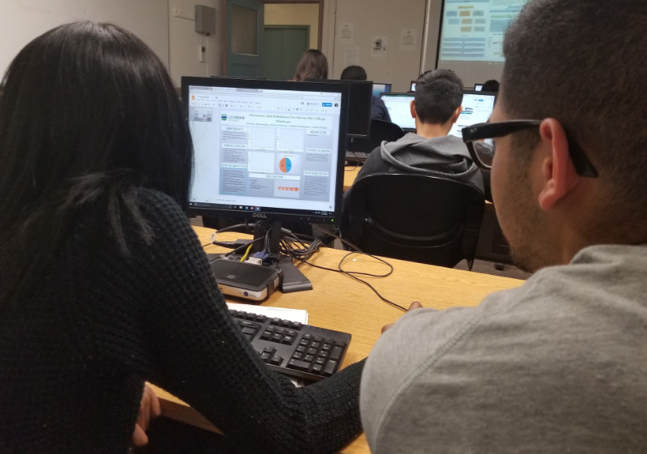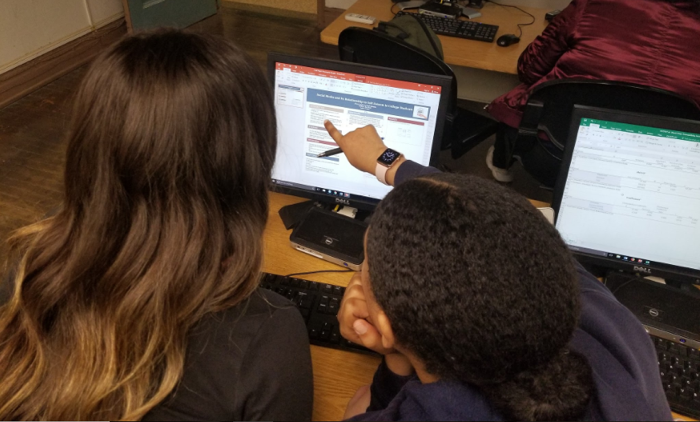By Anna Schwartz, Rita Obeid, and Kasey Powers
Experimental Psychology aims to teach students the essential skills associated with evaluating, conducting, and communicating research findings. The course aims to satisfy two main learning objectives: to help students conduct valid research and help them communicate research findings effectively using APA style. In our experience, the course is typically viewed by students with dread because of the heavy emphasis on methods, statistics, and writing. Students complete labs on a variety of topics (e.g., naturalistic observation of human behavior on the subway, surveys of social media use and self-esteem, Stroop interference, implicit associations) and they generate a lot of data! Given the large number of labs (usually a minimum of six per semester), we asked ourselves, What we could do to help students communicate their findings without requiring full lab reports? While communication is an important skill to develop in undergraduate students, having them write full lab reports for each of the studies is very time-consuming and frankly overwhelming for us to grade, given our heavy teaching loads and other obligations. With all this in mind, we asked, How can we modify the course so that students gain practice communicating their findings in a professional format, but without the pressure of writing lengthy papers?
The solution that we came up with is to have students work on posters that effectively serve as outlines for APA-formatted lab reports. Posters teach students how to organize their ideas, write a concise statement of research questions and study aims, identify and cite relevant source materials, summarize important points from previous literature, create graphic displays of research methods and results, and communicate the main findings (orally as well as in writing). Budding researchers often begin their careers presenting posters at conferences, yet coursework does not prepare them for them for this task.

The first question people (and students) ask us is “Do the students have to print all these posters?” No, we do not kill any trees! Instead, we have students pull up their posters on lab or laptop computers to get individualized peer and instructor feedback, and they make their final poster presentations using the overhead projector at the front of the classroom. To get students started, we show them examples of posters and provide a template that they can use. We talk about the different parts (i.e., abstract, background, methods, results, discussion, references) that need to be included as well as design elements like color, fonts, background, pictures, and graphics (i.e., tables and figures). One of us uses post-it notes to help students figure out how to arrange information to fit within dimensions of the poster, and then we have students go around the room to give each other feedback on what should go where.
We have students generate multiple posters over the semester to scaffold the process of evaluating scientific research, developing various APA style skills (e.g., making a table, generating references), and creating and presenting scientific posters in front of an audience. By providing the students with multiple opportunities to generate reports of their findings, we can focus on one or two skills at a time to reduce cognitive load. An additional benefit of the multiple poster strategy is that students refine skills that are not traditionally targeted by experimental classes, such as advanced use of PowerPoint, which is an important professional skill. Students are grateful to use our template for their first poster, but, by the second time around, the students find poster templates that better fit their own styles. Giving students the opportunity to improve on the design of their posters generates a lot of excitement and pride, and we have seen enormous improvement in the quality of the posters over time as students get the knack of APA formatting. As one of our students said in an end-of-semester evaluation, “I liked the posters most in this course. After a while I got very used to doing them and once I had all my data and charts I had no problem completing the rest of the poster.”
The poster-making assignment also works well in a class where students conduct their own semester-long research projects and turn in an APA style paper as the final product. Since they have had repeated experiences with each of the core components of an APA style paper in poster form, they have a stronger concept of what should go into a full lab report. Having students work incrementally in developing pieces of their lab reports in the form of a poster (and setting weekly deadlines) helps them to organize and progress in writing the full written report. At the same time, it provides multiple opportunities for us to give feedback, which helps students better prepare for their end-of-semester oral presentations. During peer-feedback sessions, students walk around and learn about their classmates’ posters and projects, just as if they were at a conference. They get a sense of what a conference might be like and they get to practice communicating their results to others. The session is just like presenting at a mini-conference!

One of the goals of the undergraduate major in Psychology is to teach students how to read and write APA formatted articles. As teachers of Experimental Psychology, we believe that making posters is a developmentally appropriate assignment for students in lab-based courses. Posters are useful in helping students to visualize information, pull together big ideas, and explain their research projects to others. It is really wonderful seeing students working hard to learn skills that they know will be useful in the workplace.
